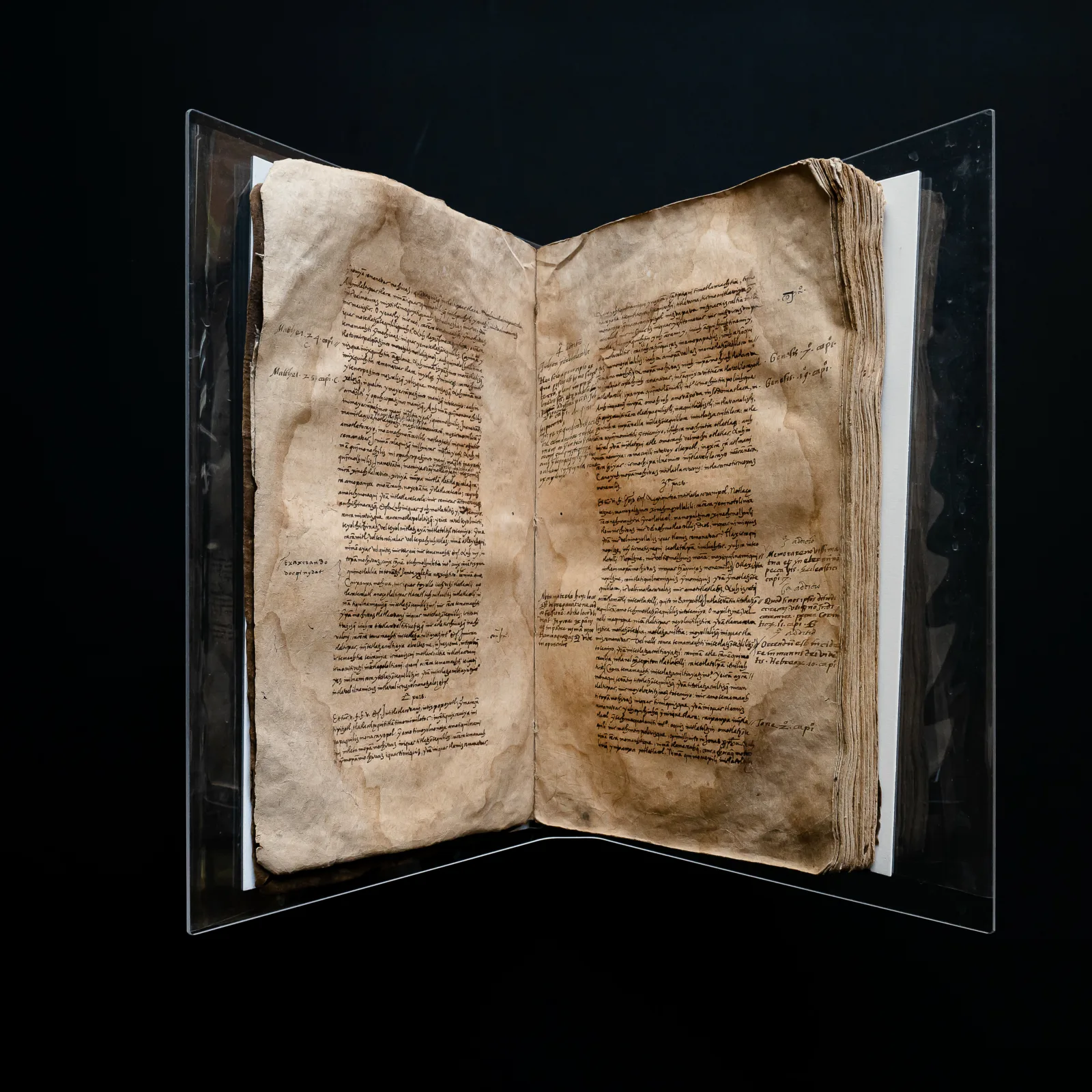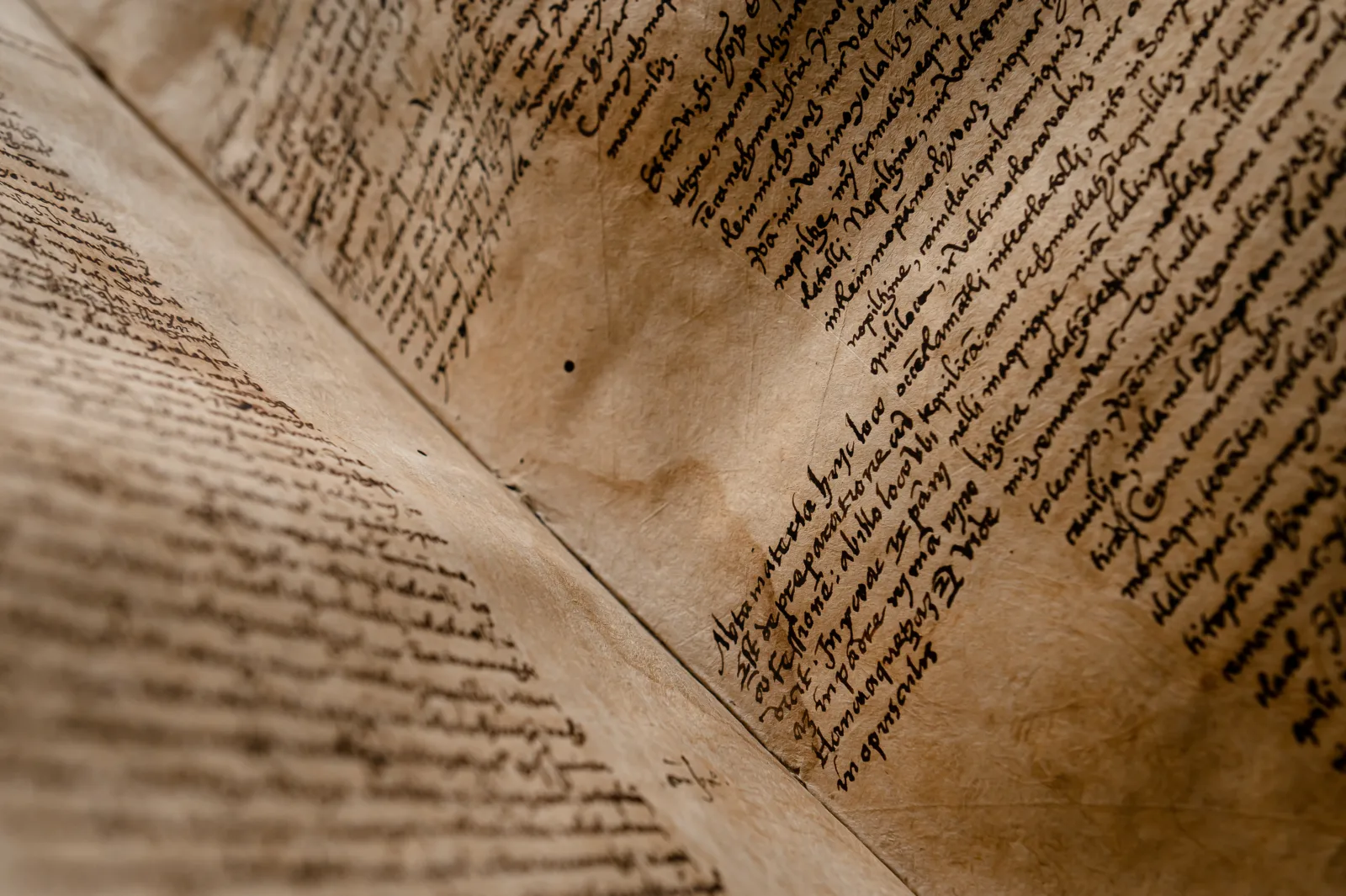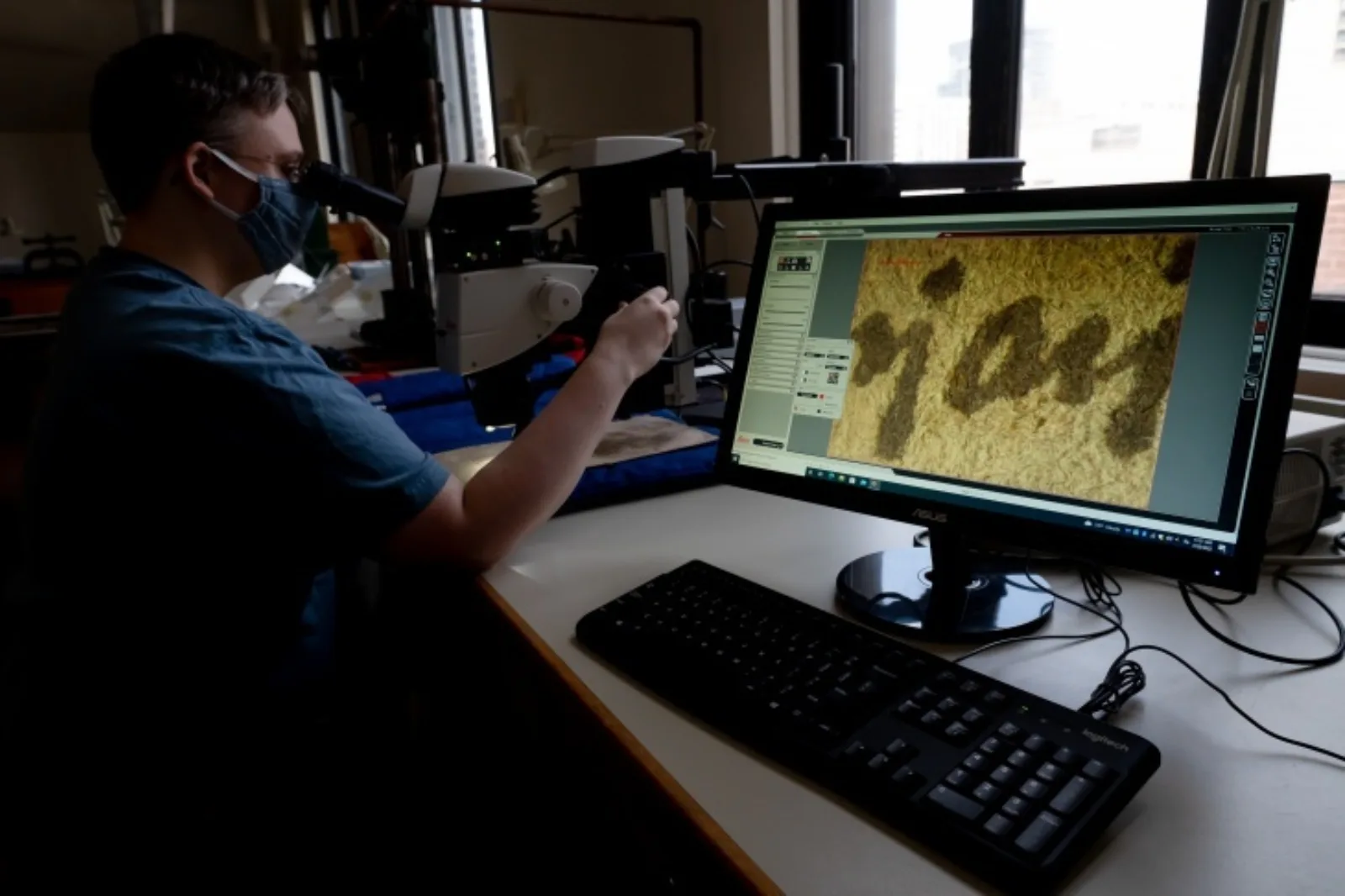In April of this year (2022), a spring Saturday afternoon found me sitting in a Harvard classroom where the Northeast Conference of Nahuatl was assembled. After a COVID hiatus of two years, we were meeting once again, and it was like a family reunion.
Nahuatl is the language spoken by the Aztecs. At the podium, Ben Leeming, an anthropologist who works on centuries-old Nahuatl texts used to convert Native peoples to Christianity, was talking. Ben, whose boyish face is matched by the energy of a teenager, usually ends his annual talk with the most extreme Nahuatl word his research has yielded in the past year—often a scatological epithet coined to describe the nefarious activities of the devil.
This year, he was presenting on a manuscript held at the Newberry Library, written by the famed sixteenth-century Franciscan missionary Bernardino de Sahagún. To this group, Sahagún needed little introduction; working in Mexico after the fall of the Aztecs, Sahagún produced an encyclopedia of Aztec history and belief. This book, known as the Florentine Codex, is the main source of what we know about Aztec culture.
The Newberry manuscript (whose call number is Ayer 1485) is a collection of sermons, written in Nahuatl, to be used in Catholic masses. Sahagún wrote the text between 1540 and 1563, when he was also working on the Florentine Codex.

While Ben projected images of different passages from Ayer 1485 on the screen, my eye snagged on the edge of the page he was showing. When question time came at the end of the talk, my hand flew up. “Ben,” I asked, “is that amatl paper I’m seeing?”
I’ve long been interested in amatl paper, a material that has been made in Mesoamerica for over two thousand years. Its antiquity outstrips that of European paper by more than a millennium.
Created from the inner bark of the native ficus tree, amatl paper was more often used in rituals than for manuscripts—burned to carry blood offerings to deities, or used for the costumes that would convert human actors into embodiments of the gods. After the Spanish invasion of 1519-21, it was largely replaced by imported European paper. But it was still a prestigious material within the Native communities of Mexico, used for setting down only the most important texts.
The Newberry has a number of Native manuscripts painted on amatl paper, and they often deploy the pictographic script developed in Central Mexico. But these manuscripts are rare, and they are often only a single sheet.
Ben told me he thought that the manuscript was on amatl paper. But he couldn’t be sure, because he hasn’t seen a lot of the stuff. Few of us have. Most colonial-era manuscripts from the Americas are on European paper, including every other Sahagún manuscript that survives. The Florentine Codex, for instance, is written on 2,400 pages of paper imported to Mexico from Italy.

When I got back to Washington, where I was on a fellowship at the Library of Congress, I sent a text to my friend and colleague, Mary Elizabeth (Betsy) Haude, who is a conservator there, and may be as obsessed with amatl paper as I am.
“Betsy,” I texted, “Can you drop by my office? I can’t wait to show you a manuscript.” Luckily, I had been invited to participate in a summer seminar sponsored by the National Endowment for the Humanities at the Newberry, so I could see Ayer 1485 in person. And even better, after seeing some of Ben’s pictures, Betsy was willing to arrange her summer vacation so we could meet at the Newberry.
On July 20, Betsy and I spent a day with Leith Calcote, a conservator at the Newberry, carefully examining every one of the Sahagún manuscript’s 196 pages in the Newberry’s spacious conservation lab. It was clearly Native paper. Betsy pointed out the typical patterns of facture: pages showing a grid pattern of fibers when back lit, the sheets carefully pounded to an even thickness, the edges rolled and pounded to achieve the final rectangular shape.

There’s a small possibility that the paper could be the fiber from another Mexican plant, the agave, called “maguey” in Mexico (also the plant that gives us tequila!). Only testing of the fibers will prove determinate. Leith’s expertise in European books helped us see it as a hybrid book, embodying both European and Nahuatl traditions. The gatherings of pages into quires, along with the preparation of the paper before the process of writing could begin, dovetailed perfectly with many sixteenth-century European books.
As we carefully examined the manuscript, we mulled over the question: Why would Sahagún have elected to use this paper? I know of no other work where amatl paper was used for a book authored by a Spaniard. And Sahagún clearly had unfettered access to European paper for all of his other works, so it wasn’t the lack of another alternative. And given that most Native manuscripts are on single sheets of amatl paper, 196 pages is a lot of amatl paper, perhaps the largest collation of amatl paper to exist today.
While I may never be able to satisfactorily prove it, I have a theory about why amatl paper was used for Ayer 1485. For Sahagún was never working alone—he was surrounded by a group of Nahuatl-speaking intellectuals, at least one of whom could trace his ancestry back to the Aztec emperors, and all of whom had embraced Christianity. It was they who taught him Nahuatl, it was they who helped him with translating concepts like “immaculate Virgin,” and it was they who supplied him with the elegant metaphors through which to describe novel Christian ideas.
Sahagún’s profound understanding of Aztec belief and history came from them. And in the case of Ayer 1485, it was one of them who copied out Sahagún’s full Nahuatl text in a measured and precise script. The paper may have not been Sahagún’s election, but that of his Native collaborators, who saw fit to set Christian sermons down on the substrate that they regarded most highly. To these men, amatl paper may have been like the finest vellum in a European scriptorium. And Sahagún may have well approved of this choice, understanding that the importance of his sermons may have been made most clear to his Native audience, but less by the words on the page than by the paper upon which they were written.
Conservation Note
Because of the fragility and importance of this manuscript’s material aspects, including its paper, binding, and sewing structure, it is one of the few for which the Newberry has restricted access to the original. To ensure its preservation, the manuscript is not available for in-person viewing without an appointment. You can view the full digitized version of Ayer 1485 through our Digital Collection at any time.
About the Author
Barbara E. Mundy is Professor and Martha and Donald Robertson Chair in Latin American Art at Tulane University.